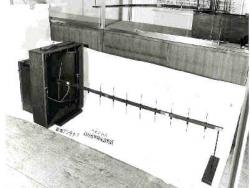Beginning in 1924, Professor Hidetsugu Yagi and his assistant, Shintaro Uda, designed and constructed a sensitive and highly-directional antenna using closely-coupled parasitic elements. The antenna, which is effective in the higher-frequency ranges, has been important for radar, television, and amateur radio.
The antenna system, using a driven element with closely coupled parasitics (usually a reflector and one or more directors) for short-wave work, was first described by S. Uda, a professor at Tohuku University in Japan, in 1926, in the IEEJ (Japan). A colleague, Professor H.
Hidetsugu Yagi

YearAdded:
Image Credit: Courtesy IEEEImage Caption: The Yagi-Uda directive short wave antennaEra_date_from: 1924
1995
Innovations

Beginning in 1924, Professor Hidetsugu Yagi and his assistant, Shintaro Uda, designed and constructed a sensitive and highly-directional antenna using closely-coupled parasitic elements. The antenna, which is effective in the higher-frequency ranges, has been important for radar, television, and… Read More


